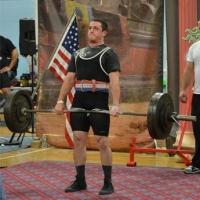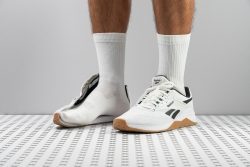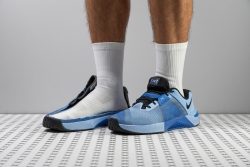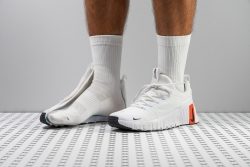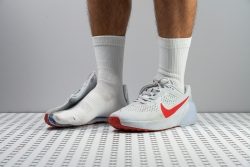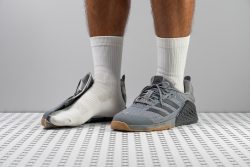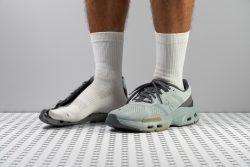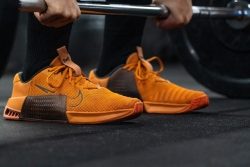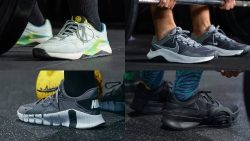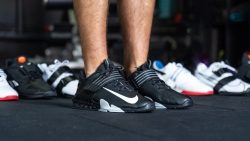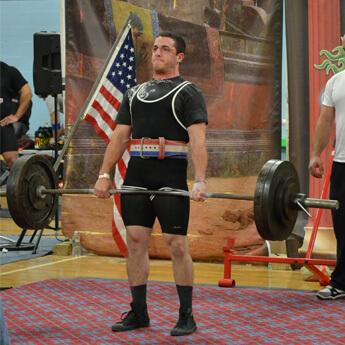6 Best Cross-training Shoes For Men in 2025
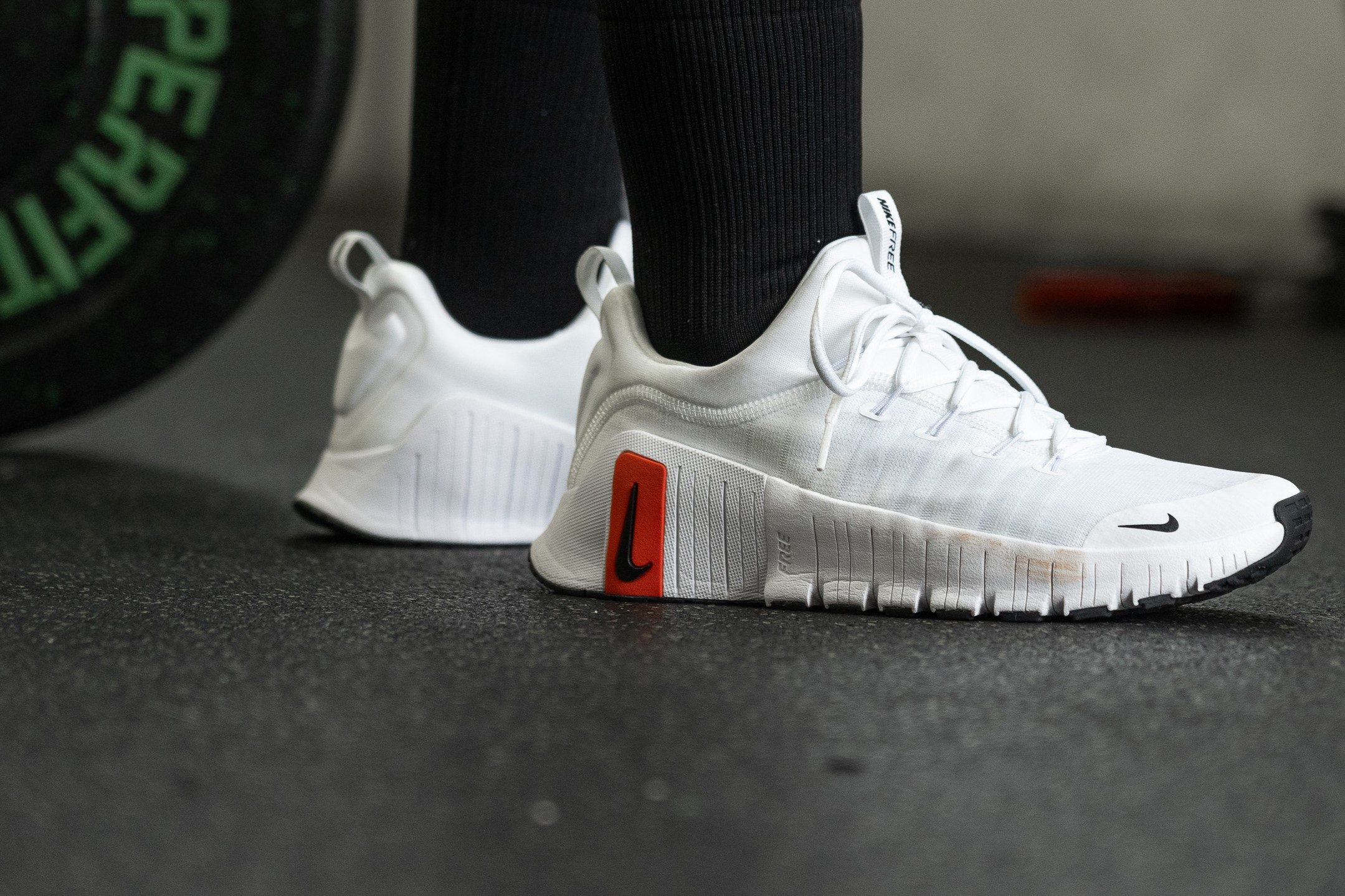
We buy shoes ourselves. We earn commissions when you buy through us, at no extra cost. Why trust us
Working towards your fitness goals becomes more efficient and enjoyable with the right pair of men's cross-training shoes. That's why we thoroughly test every trainer to pick out the best options for various aspects of cross-training - be it high-impact cardio or rigorous weightlifting.
Our top picks below cater to gentlemen with various athletic backgrounds and shoe preferences. But if you want to explore more options, scroll down for a more nuanced guide on cross-training shoes.
How we test cross-training shoes for men
As an independent shoe testing lab, we keep our reviews fact-based and brutally straightforward. Here is what allows us to maintain that:
- Buying shoes using our own funds only (no sponsorships or free test pairs from the brands)
- Wear testing these shoes in various cross-training activities ourselves
- Taking each shoe apart in our lab to test and measure every possible parameter - stack height and drop, energy return, shock absorption, flexibility, durability, traction, and breathability, among many others. We go as far as cutting cross-trainers in half to get the most precise measurements.
As a result, you get the most comprehensive and detailed review of each cross-training shoe for men. And the cream of the crop makes it to our top picks here.
Best cross-training shoes for men overall
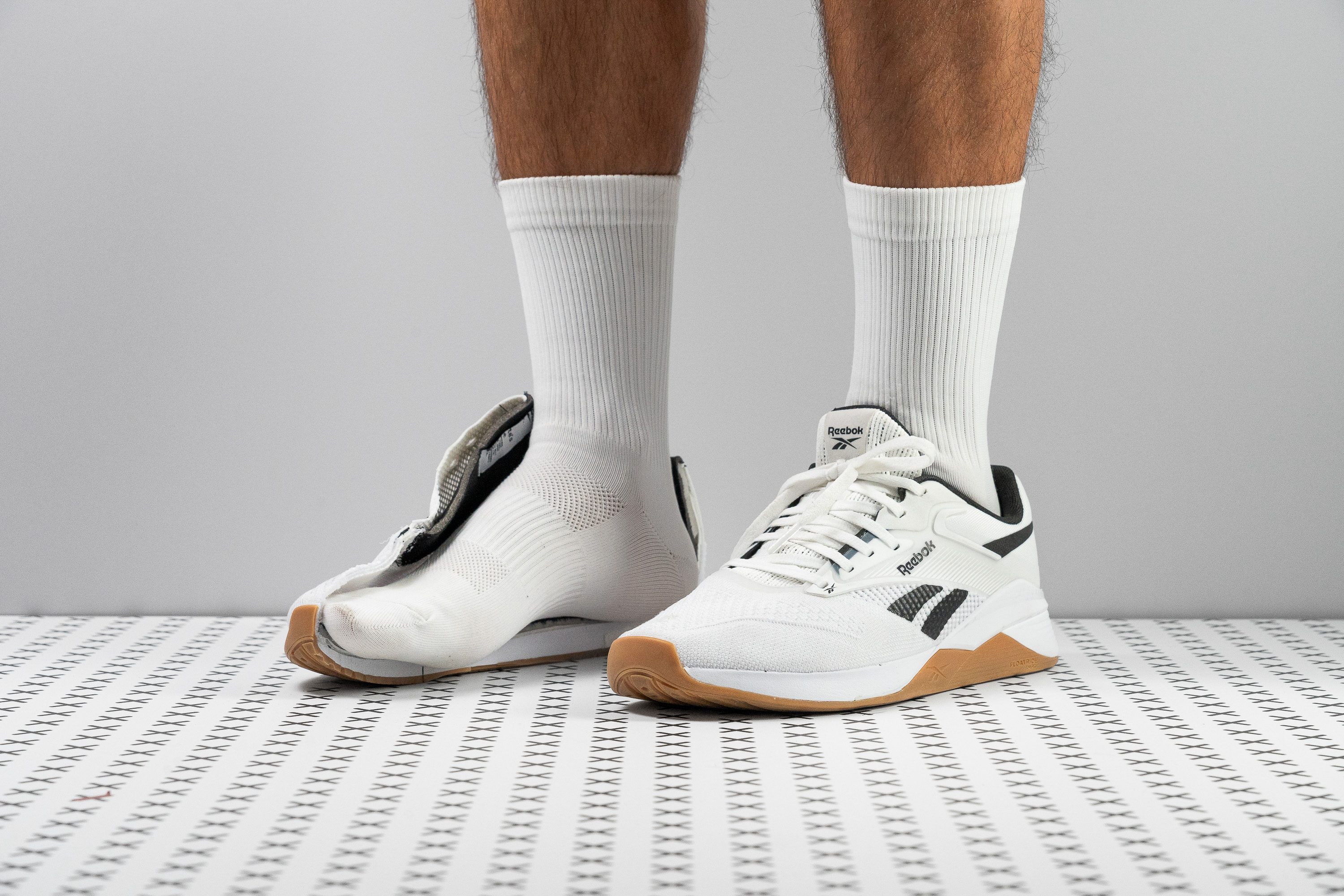













































What makes it the best?
The Reebok Nano X4 assisted us with any gym workout we had for the day. It feels agile and cushioned for cardio, flexible for floor exercises, and exceptionally stable for lifting. Our lab results show it has a good mix of support and give, confirming its versatility and its status as our top men’s cross-trainer.
For its strong build, we were surprised to discover a reasonably light 11.7 oz (332g). It’s only 8.9% heavier than average and we didn’t feel its bulk on foot. Plus, it takes only a near-average 11.8N force to bend the shoe to 30 degrees in our flex test, allowing us to perform burpees and lunges with ease.
The shoe also displayed excellent impact protection and bounce for repetitive jumping and running. Its 26.0 mm heel is more cushioned than average and has a softer 27.0 HA foam for gentler landings compared to the 30.0 HA main foam. Plus, it scored impressive ratings of 61.0% in the heel and 58.4% in the forefoot in our energy return test.
The Nano X4 features the Lift and Run Chassis, which provides solid foot containment for lifting and dynamic exercises. Men who want to lift heavier weights will feel supported because of how structured and secure the shoe feels. We tried to twist it with our hands and rated it with a 4/5 torsional rigidity rating. However, we can’t say that it will be very stable for wide-footed men since the midsole runs narrower than average. Men who prefer a wider base should look elsewhere.
Pros
- Fantastic wear resistance
- Great balance of cushioning and stability
- Feels grounded and supportive
- Secure foot lockdown
- A fully-gusseted tongue (finally)
- Nice breathability
- Lighter than the X3
- Great grip on gym floors
Cons
- Not for heavy lifting
- Not for wide feet
Best men's cross-training shoes for Crossfit
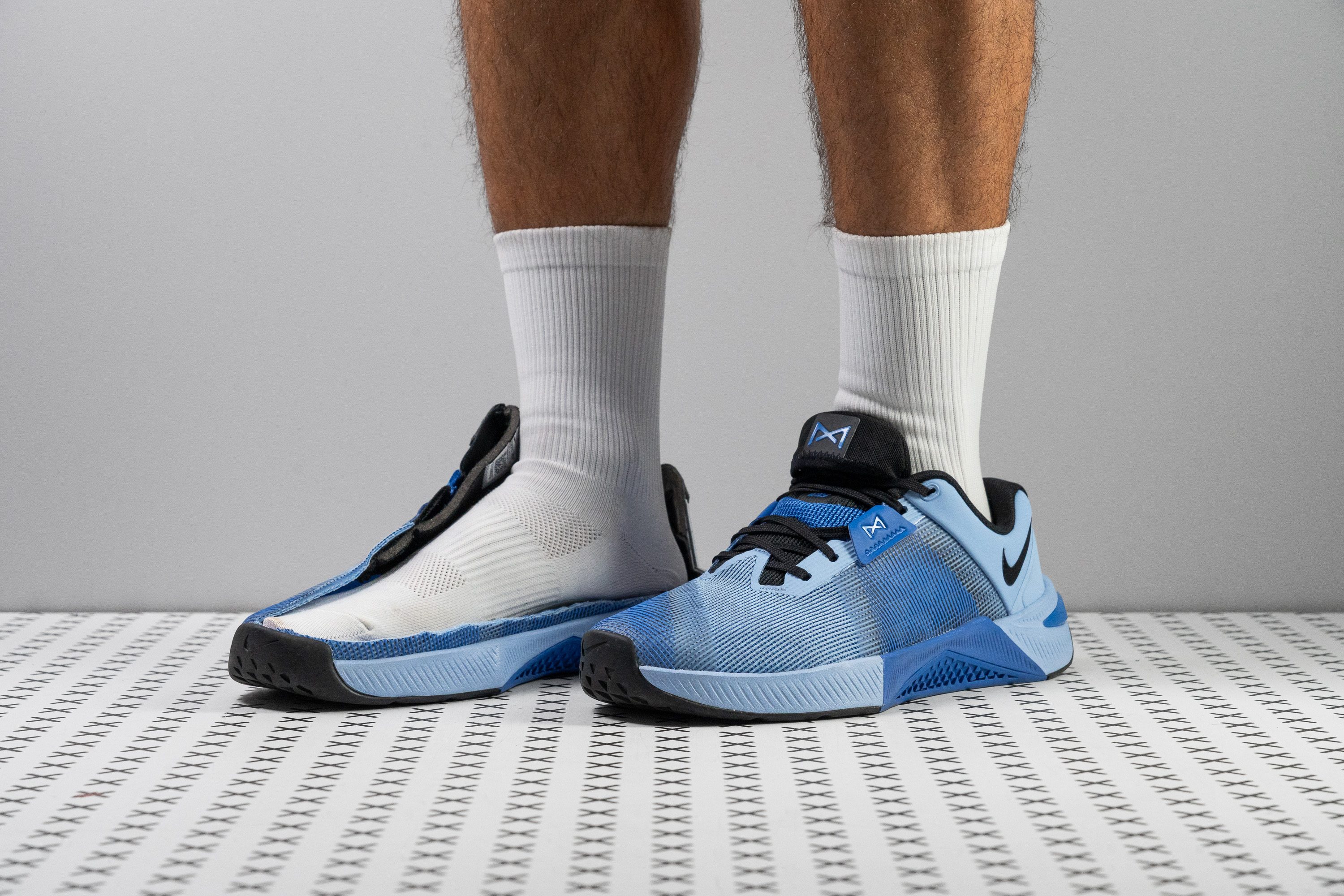














































What makes it the best?
The Nike Metcon 10 mixes grip, give, energy return, and stability well, making it highly supportive for a wide range of exercises. In our WOD workouts, we felt stable during lifts, flexible for floor workouts, and responsive for jumps. Our lab results also validate its structure and agreeability in the right areas, making it our ultimate CrossFit cross-trainer for men.
We discovered the midsole features the ReactX foam, recording high energy return scores of 63.0% and 61.2% in the heel and forefoot, respectively. No wonder it felt springy during jumps and short runs. To enhance our surefootedness for lifts, the heel has a firm Hyperlift insert that erases any potential wobbles.
We performed dynamic footwork and felt in control of our movements. First, the base measures wider than average at 115.2/90.8 mm. Second, the outsole is very grippy, perfect for men who perform exercises at full speed, backed up by its 0.38 friction coefficient in our wet-condition test.
When it comes to bending our feet during planks and burpees, the midsole freely follows. Our bend test confirms it’s 13.2% more flexible than the average trainer. Metcon 10 proves ultra-stable shoes can feel easy on the feet, too.
However, the limited ventilation had us wishing for more air during workouts. Men who don’t want to deal with overheating should go for a more breathable trainer.
Pros
- More versatile Metcon overall
- One of the lightest Metcons ever!
- ReactX adds shock absorption and energy return
- Increased forefoot flexibility
- Still amazingly stable for weightlifting
- Fantastic upper durability (even for rope climbs)
- Great grip on gym floors
- Highly secure foot lockdown
- Accommodating fit and toebox
- Handy Lace Tuck
Cons
- Outsole could be more durable
- Upper lacks breathability
Best men's cross-training shoes for HIIT






















































What makes it the best?
The Nike Free Metcon 6 perfectly encapsulates the word “free” since that’s exactly what we felt in our gym sessions. It feels barely there and allows us to transition seamlessly from cardio to lifts. Our lab results confirm its clever placement of flexible and stiff elements, making it our ultimate HIIT cross-trainer for men.
Free Metcon 6 is a breath of fresh air, evidenced by its 9.7 oz (274g) weight on the scale. That’s 10.2% lighter than average! It feels even more weightless because it practically has no resistance to foot-bending during burpees and planks. Our flex test confirms it’s one of the most malleable shoes out there, emerging 75.8% more agreeable than average!
What’s amazing is that despite having a forgiving forefoot, the Free Metcon 6 manages to stabilise its rear, perfect for men who lift too. Our sliced midsole reveals a firmer 27.8 HA foam under the heel so that it doesn’t compress under heavy loads.
Meanwhile, the rest of the midsole is a cushioned 22.5 HA and delivers a good mix of impact protection, energy return, and ground feel. It also runs wider than average at 113.9/94.4 mm, offering a more surefooted experience for dynamic lateral movements.
However, its modest stack may feel too harsh for heavy cardio and running. Men who prefer more cushioning should search for alternatives.
Pros
- Fantastic breathability
- Very light on foot (lighter than average too)
- Abundant cushioning for HIIT
- Most flexible cross-trainer ever
- Excellent stability for moderate weightlifting
- Sock-like fit in a bootie upper
- Accommodating toebox (for medium feet)
- Great grip on gym surfaces
Cons
- NOT for rope climbs (lacks protection)
- Can be hard to put on (narrow opening)
Best men's cross-training shoes for cardio
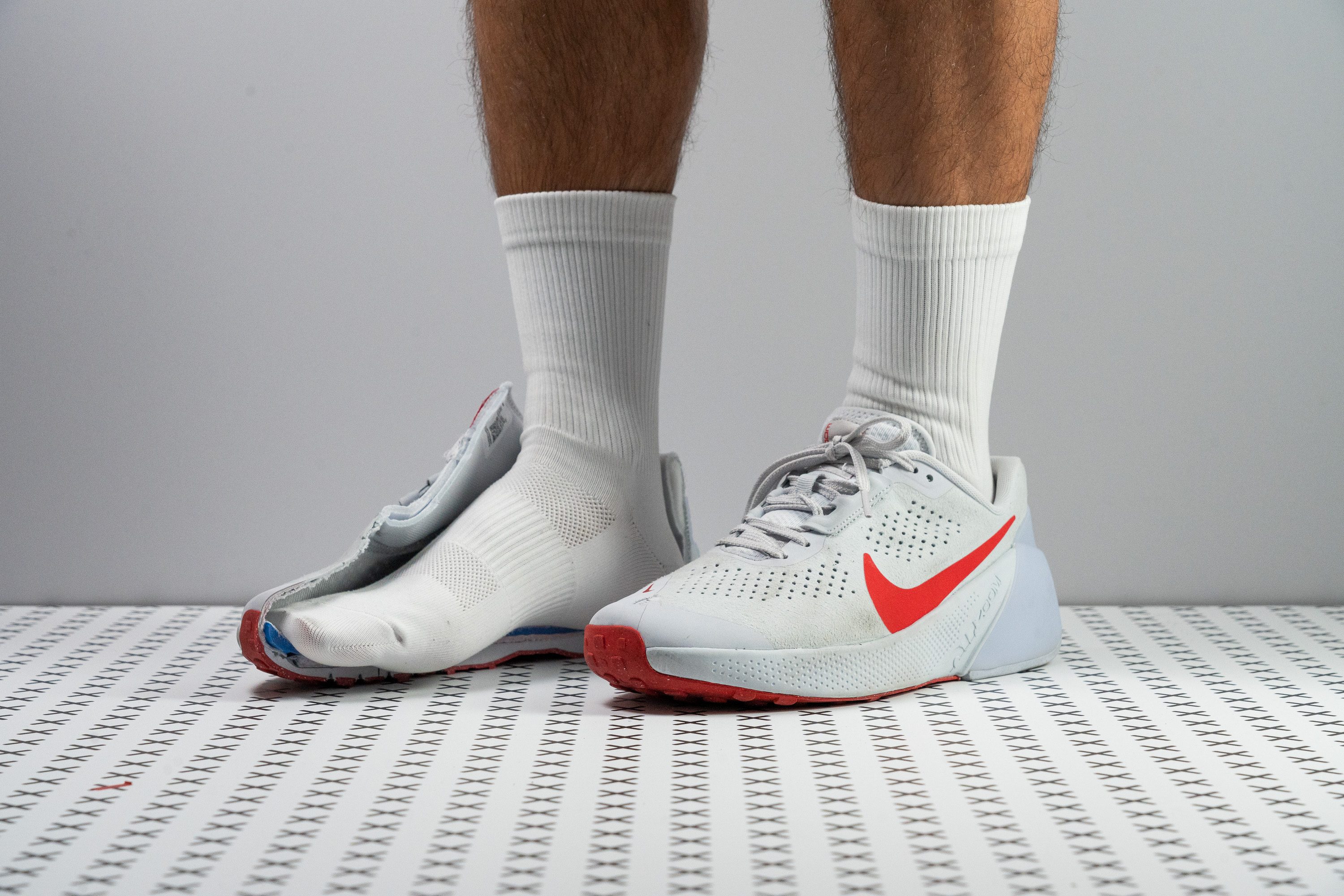











































What makes it the best?
After countless gym sessions and rigorous lab analysis, we found the Nike Air Zoom TR 1 as our ultimate cardio cross-trainer for men. It delivers excellent impact protection and consistent energy return, allowing us to perform more reps pain-free. It has a lot of give for floor workouts and effective traction to keep our movements in control.
The stack measures a modest 22.3/18.4 mm, giving us a good sense of the ground. Even with hard landings, our joints and muscles feel cushioned. Our durometer confirms it's 26.3% softer than average. To avoid feeling too mushy, the midsole includes an Air Zoom unit that fuels our explosive movements, perfect for men who perform jumps and runs.
The midsole gave us room to bend for heavy cardio exercises like mountain climbers and burpees. Bending our feet was never a problem. Our lab backs us up with the same flexibility score as the average in our bend test.
We had full confidence to perform dynamic footwork and quick sprints because the outsole delivered reliable grip for slippery gym floors. Our durometer shows the rubber is 8.9% softer than average, which usually translates to better traction based on our past results.
However, the upper provides almost no airflow, evidenced by its 1/5 breathability score in our smoke test. Men who need ventilation for heated sessions should find another pair.
Pros
- Dependable bite on gym floors
- Pretty durable toebox
- Good impact protection
- Nice lateral stability
- Secure heel hold
- Smooth heel-to-toe transitions
- OK for occasional outdoor use
Cons
- Not breathable at all
- Not for heavy lifting
- Not for heavy lifting
Most men's cross-training shoes for lifting
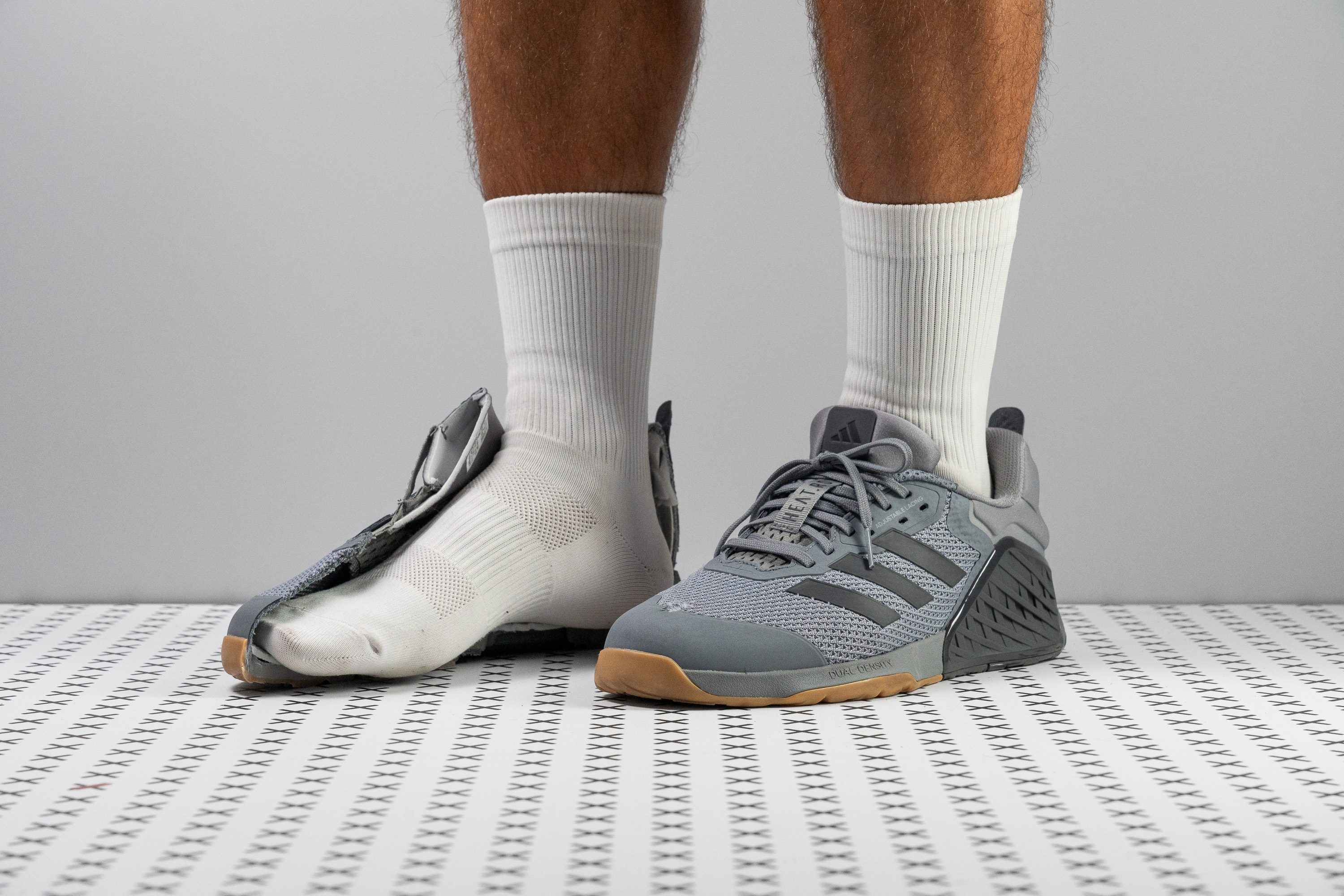






















































What makes it the best?
Through countless gym sessions and lab tests, we discovered the Adidas Dropset 3 is the best for lifting among men’s cross-trainers. It offers unwavering support and security without compromising comfort and ease of movement. It allows us to seamlessly transition from carrying heavy loads to performing other dynamic exercises.
Men who like to test their PR weights will appreciate the ground feel and stability the Dropset 3 offered us. The 116.9 mm forefoot runs wide so we have enough space to find our footing. Plus, the foothold is so secure thanks to the GeoFit Sensepods embracing our heel and the TPU wall on the lateral side of the shoe. It feels impossible to topple over in it.
Dropset 3 features a grounded 22.6/14.8 mm stack, which naturally enhances surefootedness. It includes a firm 41.0 HA foam in the heel so it doesn’t compress under heavy loads and a softer 21.5 HA in the forefoot for cushioned landings.
Despite its rock-solid stability, we could perform foot-bending exercises such as burpees and planks easily. It managed to isolate the support in the heel, allowing the forefoot to flex easily. Our bend test confirms it’s 30.3% more agreeable than average.
However, we advise against using the Dropset 3 for more intense walks and runs because of its bulky rear design. This shoe best fits men who incorporate more lifts in their workouts.
Pros
- Exceptional stability for lifting and lateral movements
- Very wide and grounded platform
- Extra durable and grippy outsole
- Very secure foothold
- Flexible enough for plyometrics
- Fantastic breathability
- Accommodating toebox
Cons
- Not great for running and walking (clunky heel)
- Can't be worn outside because of sole apertures
Men's cross-training shoes with the best shock absorption
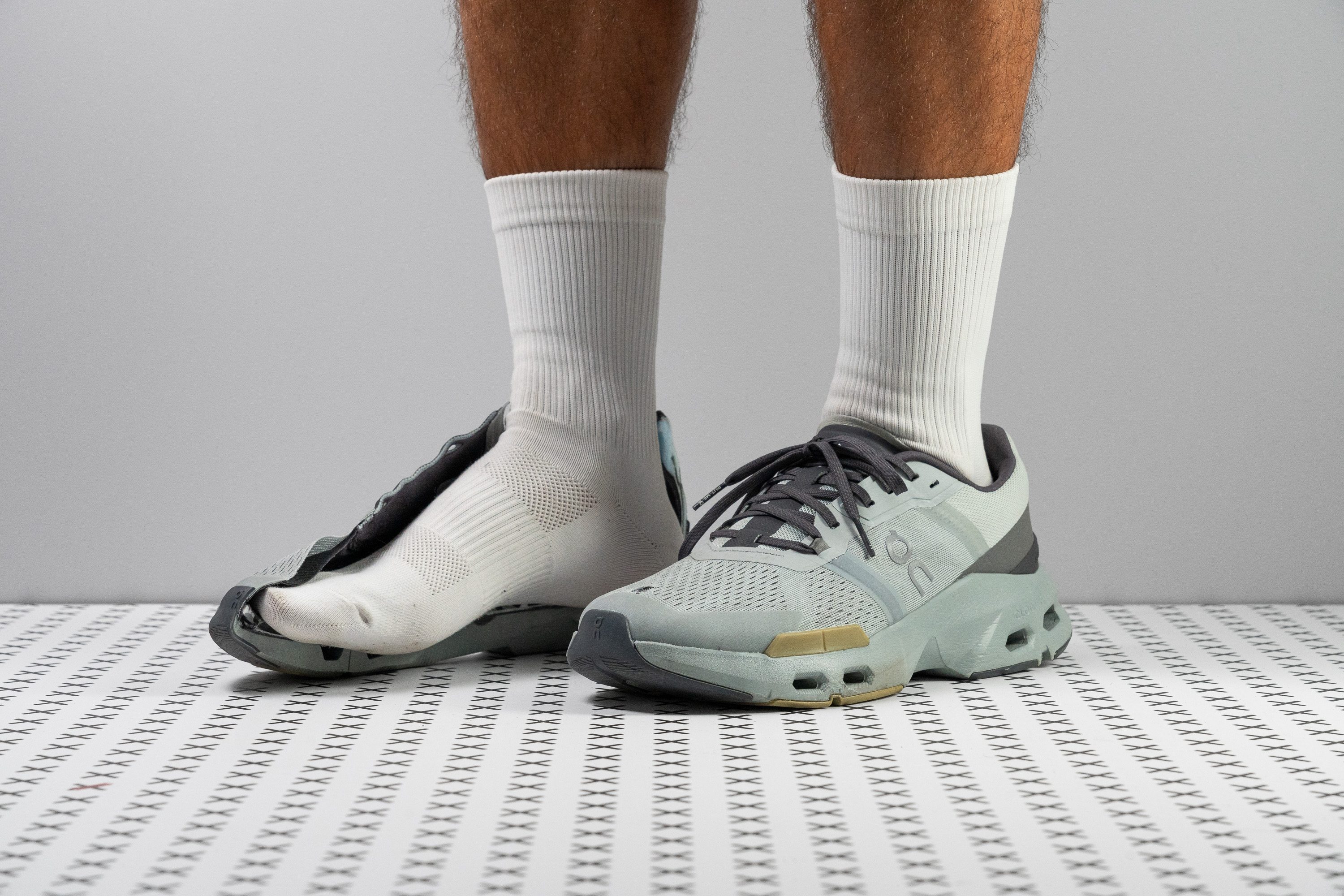





















































What makes it the best?
Among the men’s cross-trainers we tried, our feet couldn’t deny that the On Cloudpulse offers the best shock absorption. Even our lab numbers back up its unmatched comfort levels with its tall stack height and accommodating fit. Its focus on cushioning doesn’t take away the fun with its solid rebound.
We measured the Cloudpulse’s stack height to be 32.9/23.1 mm, one of the tallest training shoes in our roster. Even heavier men can be assured of bottomless cushioning for repetitive jumps and other cardio work. Diving deeper into its comfort, we measured its shock absorption in the heel and forefoot at 104/85 SA, respectively, both performing way above average.
When it was time to push off the ground, the midsole assisted our takeoffs with a nice spring. Measuring its energy return in the lab, we also recorded above-average scores of 58.1% in the heel and 60.0% in the forefoot, making our workouts so much more exciting.
The toebox is notably roomy and enhances comfort. We used a gel mould to measure its interiors, and got a wide 74.2 mm measurement, confirming it welcomes wide feet.
However, men who lift often may want to find a more grounded and stable trainer. The Cloudpulse will feel too wobbly under heavy weights.
Pros
- Excellent impact protection for HIIT and cardio
- Midsole feels responsive for jumps and runs
- Great lateral support and stability
- Highly breathable upper
- Sturdy and durable construction
- Perfect outsole grip for gym floors
- Accommodating toebox
Cons
- Not for heavy lifting (200 lbs/90 kg max)
- Not very bendy forefoot
- Frail toebox mesh (not for rope climbs)
What a good cross-training shoe can do
Crossfit WODs, functional training, high-intensity interval (HIIT) workouts, you name it - a good cross-trainer can get you through it all:
- Plyometrics: all sorts of jumping exercises (box jumps, burpees, skaters, etc.)
- Weightlifting: lifting up to 300 lbs (135 kg) (some cross-trainers can handle even more)
- Short runs: up to 1-2 miles of a warm-up or an interval training run
Can you use running shoes instead of cross-trainers?
We wouldn’t recommend that.
Even though cross-training includes some short runs (1-2 miles), 90% of its movements involve an entirely different biomechanics than running. There is a good reason why athletic shoe brands developed a separate footwear category specifically for working out.
Instead of perpetual forward motion, you perform explosive movements in different directions (or even dimensions) that call for the following shoe features:
-
Strong lateral support: Designed with side-to-side movements in mind, cross-trainers have wide and rigid platforms, and stiff heel counters and often feature stabilising TPU components on the sides and around the heel.
-
Stability for lifting: Most running shoes today feel like a 35-mm piece of soft marshmallow foam underfoot (which is fantastic when running or walking!). But the problem is that it compresses very easily under the load resulting in a very wobbly experience. That’s why cross-trainers have notably firmer and more grounded midsoles that get even stiffer in the heel to minimise instability under heavy weight.
-
Flat and wide soles: There is hardly any sole curvature in cross-trainers. Their flat shape creates more surface coverage and minimises rocking motion for better stability and control. Running shoes, on the other hand, rely on toe rockers and heel bevels to enhance forward motion.
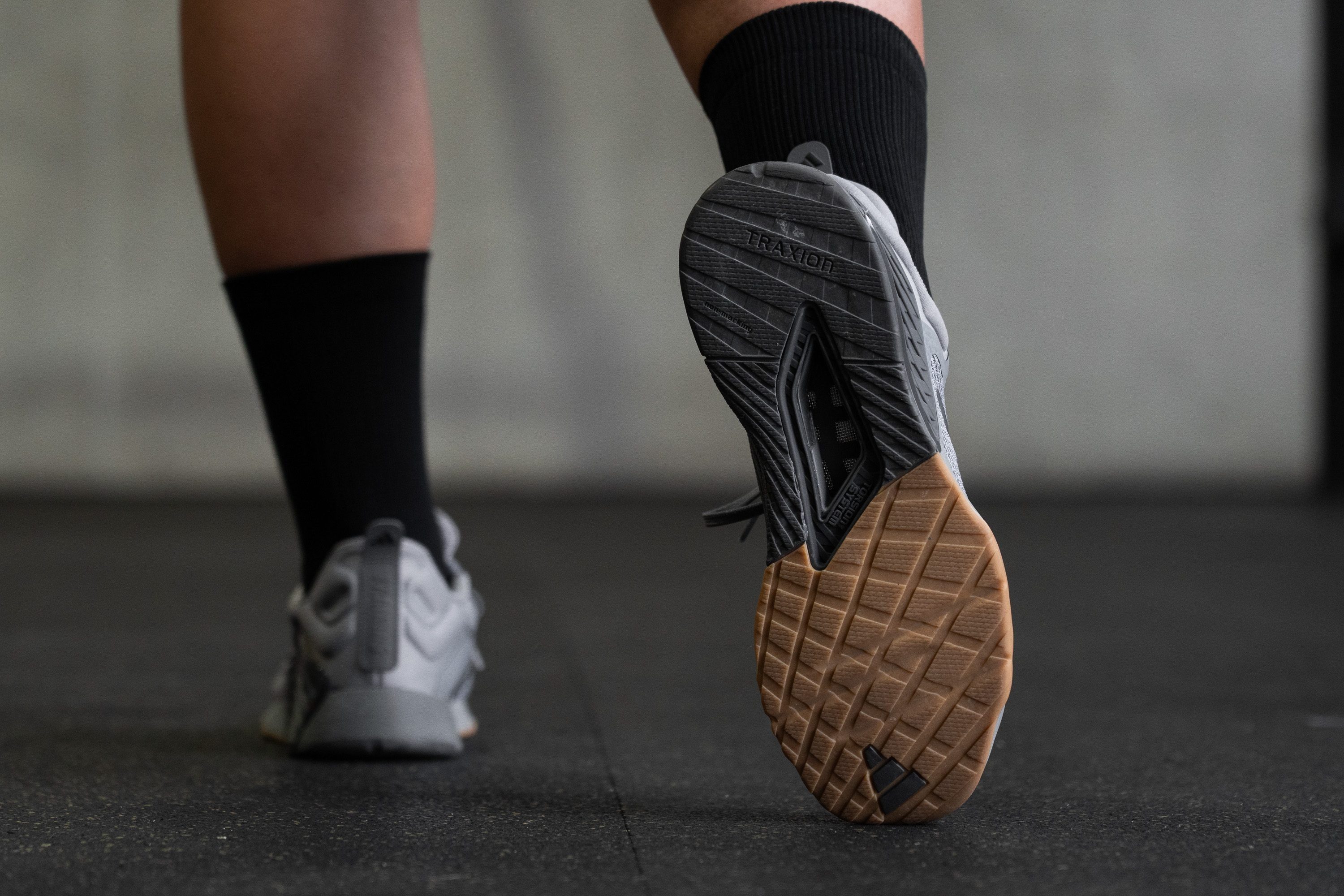
These core differences between a running shoe and a cross-trainer explain why the latter is not a luxury to wear at the gym. It is an essential tool for effective and safe performance. Yes, safe because specialised workout footwear has been shown to prevent some lower limb injuries.
How to find the best cross-trainers for men
Even though all cross-training shoes for men are designed as versatile do-it-alls, they do it all in their own way. Based on their construction and most pronounced features, cross-trainers can be roughly divided into three categories:
- Cushioned cross-trainers for high-impact exercises/cardio
- Stable and sturdy shoes for weightlifting/strength training
- Minimalist trainers for barefoot-like experience and foot strengthening
Depending on your training focus, you may prefer one category over the other. Some seasoned gym goers even buy several cross-trainers for their rotation to reap the benefits of different shoes.
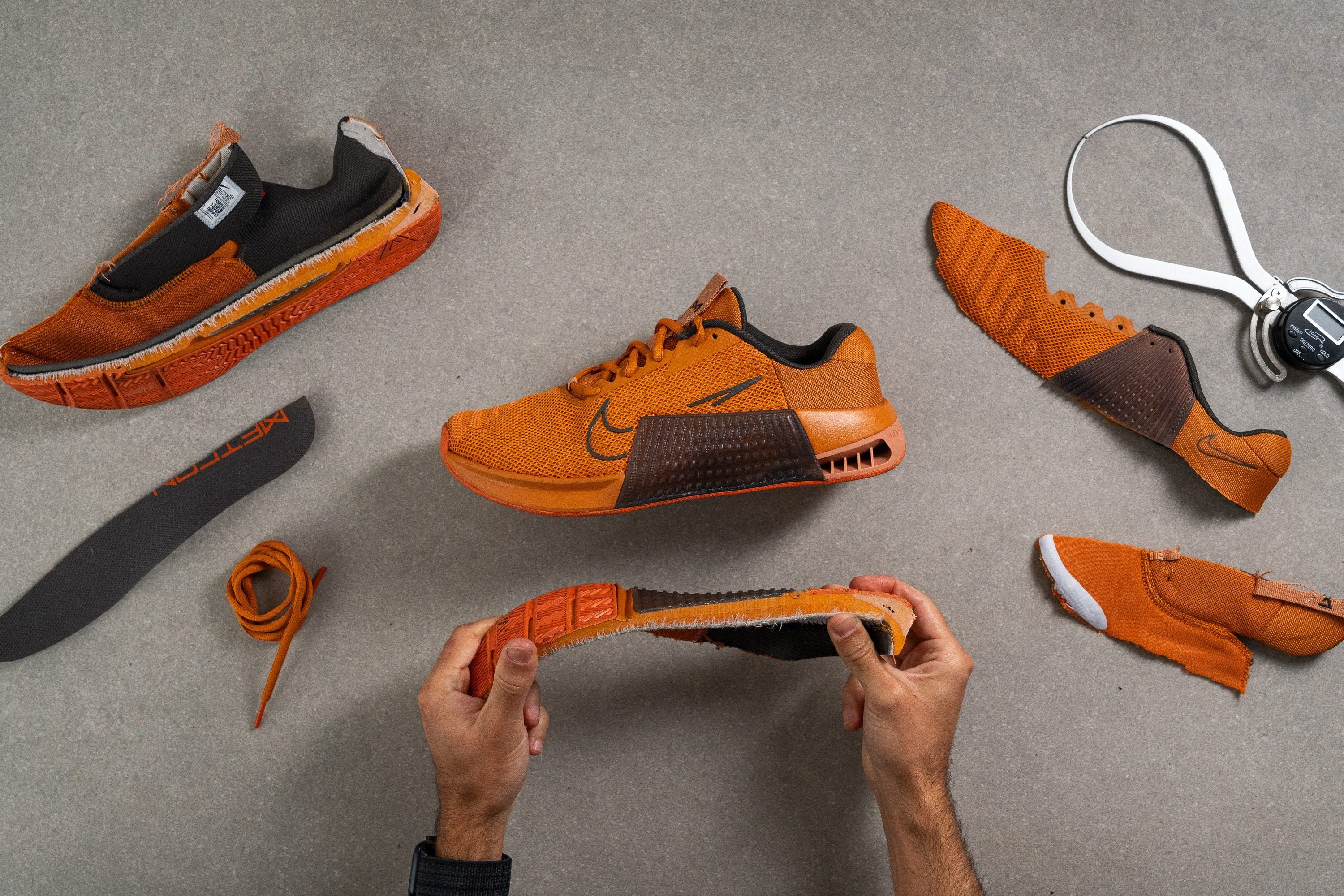
Cushioned cross-trainers
This type of cross-trainers is suitable for guys who:
- go hard on cardio/aerobics and need extra impact protection
- want comfortable shoes to double for both gym and casual use
Just because these shoes are more biased towards comfort and cushioning doesn’t mean that you can’t use them for lifting. These trainers are still good for all-around gym use, but their standout feature is shock absorption.
But how do you know which trainers are cushier without trying them on? That’s where our RunRepeat lab comes for help.
The average shock absorption of men's training shoes hovers around 80-95 SA in the heel, but if you want a well-cushioned experience, choose trainers with 90 SA or more.
Stable and sturdy cross-trainers
Strength training and weightlifting tend to be at the core of most guys’ training routines. That’s why the most popular cross-trainers like the Nike Metcons and the Reebok Nanos are so biased towards stability for weightlifting.
But unlike dedicated lifting shoes (with elevated heels and incompressible wedges), stable cross-trainers mix the best of both worlds allowing you to perform general fitness exercises outside of squats, cleans, jerks, and bench presses only.
So what makes these trainers more stable?
- notably firmer midsoles
- high torsional rigidity (inherent midsole firmness + stiff stabilising components)
- stiff and secure heel counter
- wide and flat platform
Unlike cushioned shoes, stable cross-trainers for men show much higher durometer numbers in our midsole firmness test. They can be more balanced (26-30 HA) which makes them better for high-impact exercises or much firmer and less compressible (30-40 HA) which is ideal for heavy lifting.
We perform a manual test to determine torsional rigidity and heel counter stiffness of men’s cross-trainers. Depending on how much resistance we feel, each shoe gets a stiffness score from 1 to 5 (5 being the stiffest).
Lastly, we use a calliper to measure the widest parts of the midsole in both the forefoot and the heel. There is a direct correlation between a shoe’s platform width and stability.
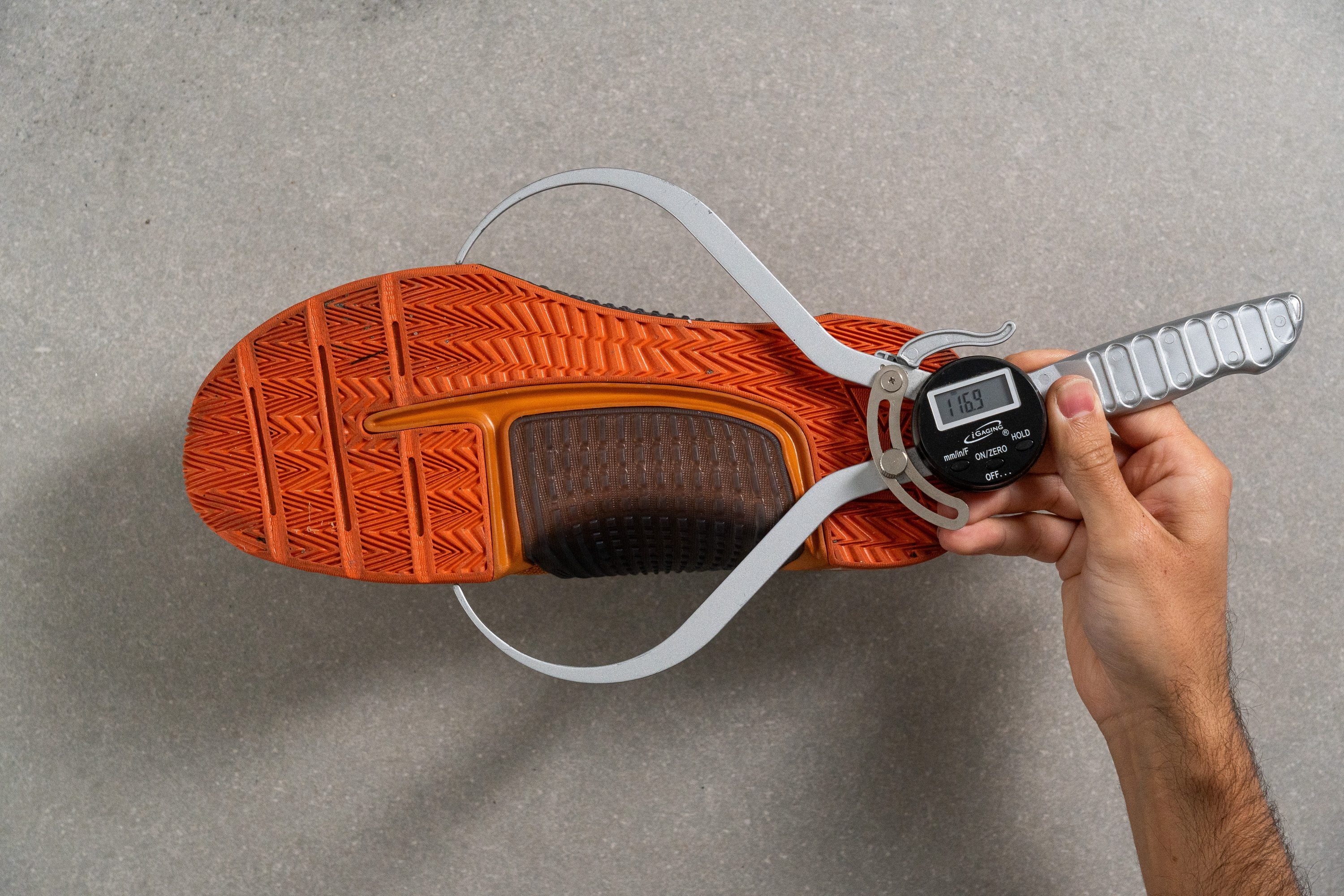
Minimalist cross-trainers
More experienced male athletes often get a pair of minimalist trainers to enhance their overall fitness. Because these barefoot-like shoes have no cushioning or added support, they force your feet, legs, and body to work more than they would in regular trainers.

Other benefits include:
- better body alignment (better posture)
- better balance and coordination through improved proprioception
But for the exact same reason, we can’t recommend minimalist cross-trainers to beginners. And if you are planning to add that type of footwear into your rotation, you MUST START SLOW AND EASY, allowing your feet and body to adapt to the new sensations and biomechanics.
A minimalist cross-trainer for men will have the following features:
- ultra-thin sole (10-15 mm of stack height)
- very flexible construction which bends along with the foot
- super lightweight, barely-there on foot
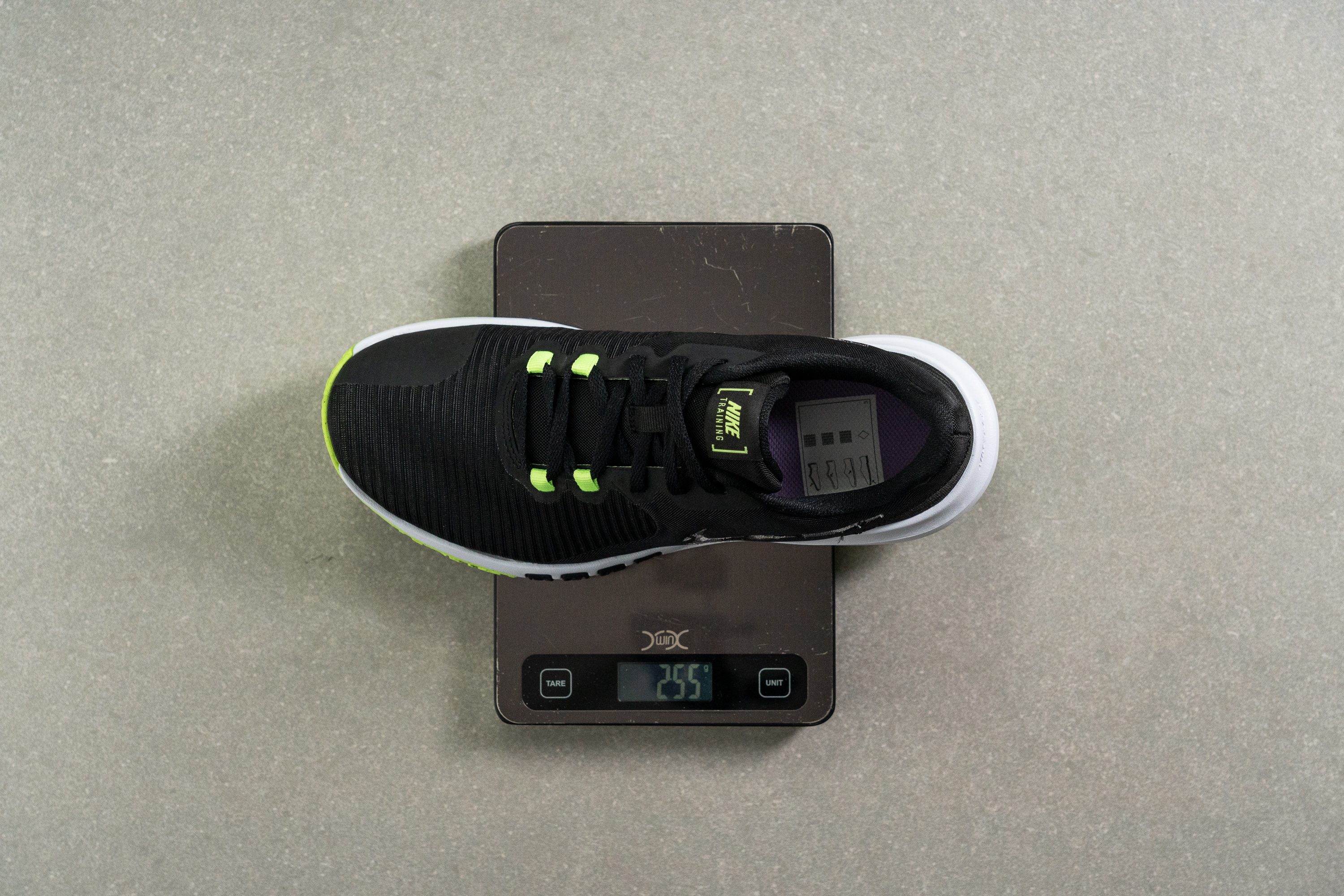
How to choose the right size and fit in men’s cross-trainers
Size: If it’s been over a year since you last bought a pair of athletic shoes, you may want to measure your current foot length (just to be sure it hasn’t changed).
Ask a friend for help and follow these 3 simple steps.
Once you have the length in inches or millimetres, go to the corresponding brand size chart and find our which size suits you best. Please note that you may need different sizes in different brands!
Fit: In many cases, getting the right shoe size is equal to achieving the right fit as well. But not always.
Men’s feet come in all shapes and sizes and everyone deserves a cross-trainer that feels fine-tuned to them.

It should also be noted that men’s cross-training shoes tend to have roomier toeboxes than running shoes or lifestyle trainers. This forefoot shape helps to accommodate natural toe splaying during jumping and lifting.
So don’t rush for an exchange pair if your toes feel a little freer in the new trainers (but please do if the dead space feels too much).
|
How to find the right fit |
|
|
Narrow feet |
|
|
Medium feet |
|
|
Wide feet |
|
But how do you know the shape of each man’s cross-trainer?
We solved that problem in our lab by using a proprietary gel substance to create precise moulds for each shoe’s interiors.
Once the mould is solid, we use a calliper to measure its width in the widest part and near the big toe, as well as its toebox height.
The photo below shows how two shoes can have very different widths even if they are from the same brand and were measured in the same size (men’s US 9) and width (D medium).
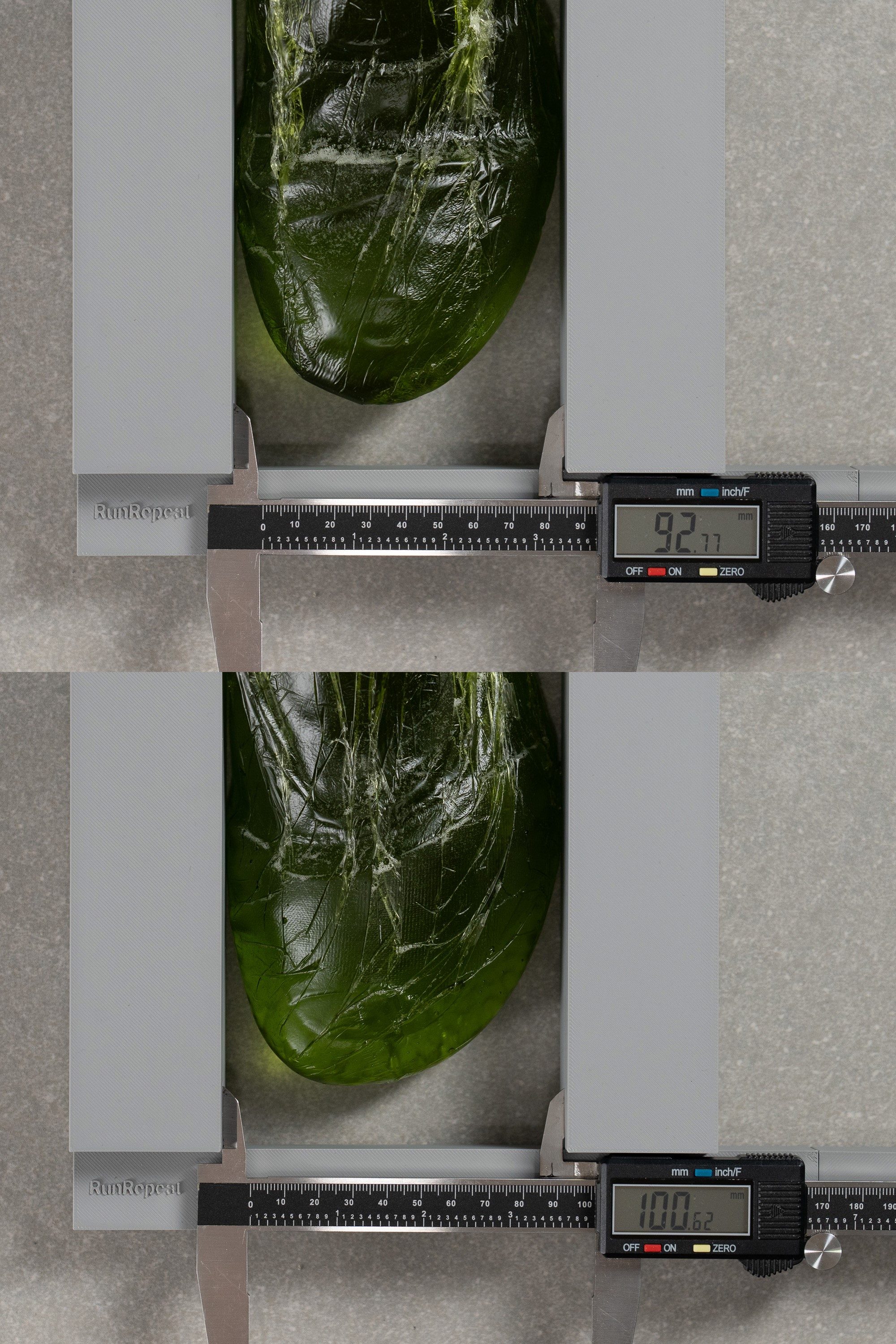
How long do men’s cross-training shoes last?
It is important to understand that cross-training shoes may be worn out way before they develop visible signs of deterioration. How is that possible?
Your shoes start to lose their initial cushioning and support which can only be felt and not seen. Here are some of the surefire signs that you need a replacement pair asap:
- the midsole feels pancake flat, there is no give when walking and jumping
- the midsole is tilted - one side got thinner than the other causing your foot to buckle
- you start to experience pain somewhere in the foot, knees, heels, or even lower back
- your feet and legs feel more fatigued post-workout
It really helps to have at least 2 cross-trainers in your rotation (a newer one and an older one) to be able to spot these signs sooner.
Other obvious signals that you need a new pair include:
- worn out traction pattern on the outsole
- outsole separating from the rest of the shoe
- tears and holes in the upper
But how long does it a cross-trainer to get to that point?
That depends on factors like your own weight, the exercises you do, and how often you work out. If you focus on heavy weightlifting or do a lot if abrasive exercises like rope climbing or rope jumping on concrete, expect to get a replacement pair sooner.
Based on our own experience and observations:
- If you train 3 times a week, you will need a new cross-trainer in about a year.
- If you train 5+ times a week, expect to buy a new shoe in 8-10 months.
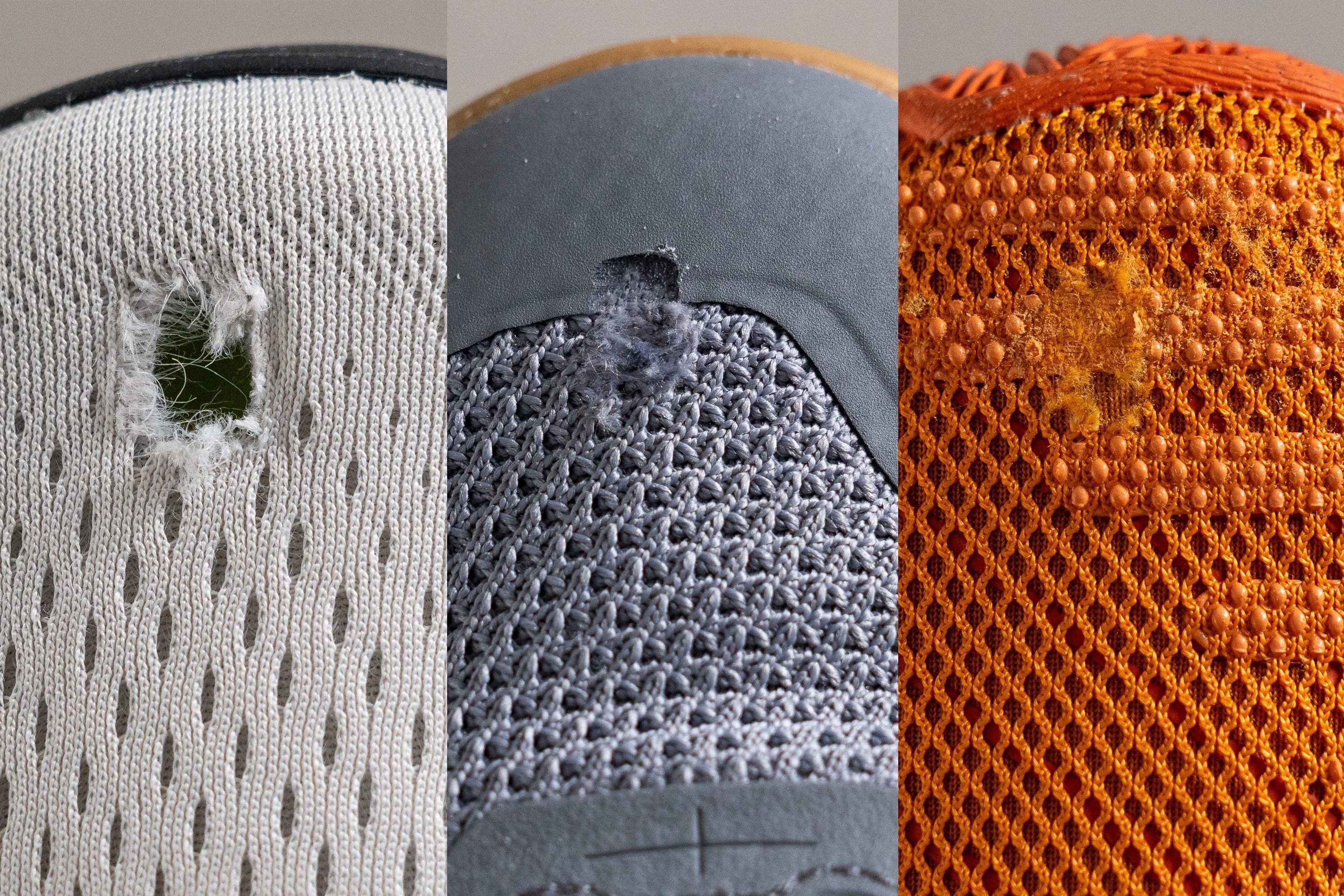
In our shoe lab, we perform several durability tests to predict the longevity of each cross-training shoe. Using a Dremel with sandpaper, we drill each shoe’s toebox fabric, inner heel lining, and outsole to check how much abrasion they can take.
Based on these tests, each shoe’s toebox and heel padding get a durability score from 1 to 5. For the outsole, we present the exact depth of the dent we drilled (the shallower the better).
How to save money on your next pair of cross-trainers
The average retail price of a men’s cross-training shoe these days is £130. Not a cheap buy, we must say.
But here are a few tips on how you can cut costs on the next pair:
- Compare prices: But manually checking every retailer out there takes A LOT of time. That’s why RunRepeat is here for you. We track prices and sales from over 200 online stores to let you know where you can buy your favourite shoe in your size and colour the cheapest. Set up a price alert on our product page and we will notify you as soon as the price drops in any of the shops.
- Check previous editions: Did you know that Nike Metcon only receives major updates to their shoes in the odd iterations (7, 9) keeping even ones (6, 8) very similar to the predecessors? And in some cases, the older version happens to be even better than the newer one. Go to our catalogue page of men’s cross-training shoes, sort by discount, and you will see previous editions of popular men’s cross-trainers with a lucrative discount of up to 70%!
- Check budget-friendly shoes: Every shoe brand offers a range of budget-friendly cross-trainers for £100 or less. Here are some of the cheapest men’s cross-trainers on the market right now:
